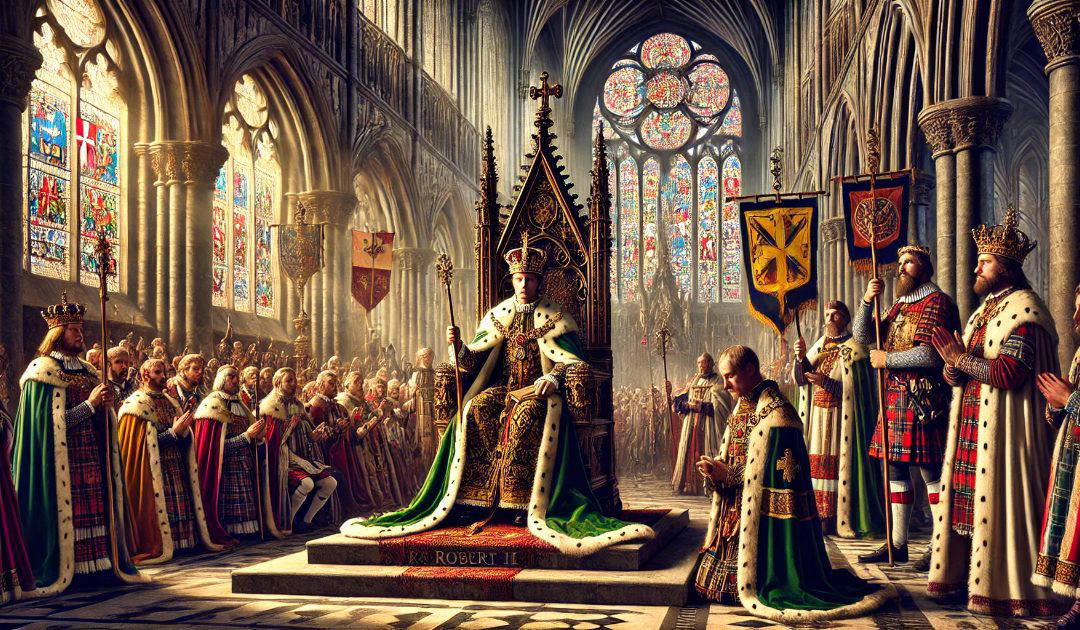I’ve written about Kings of Scotland before, and my word, hasn’t AI got better at creating believable illustrations over the last year. My ancestor Sir Anthony Standen lived through the reigns of English monarchs from Henry VIII (briefly) to James I and perhaps even Charles I (briefly). He was knighted by both Mary Queen of Scots and Queen Elizabeth I, and sent to the Tower of London charged with treason by Englands first Stuart monarch, King James I of England, King James VI of Scotland. So let’s look at the start of the House of Stuart.
King Robert II was crowned King of Scotland on the 22nd of January 1371. He was born on the 2nd of March 1316 and was the first monarch of the House of Stuart. He ruled from 1371 until his death in 1390. He was the son of Walter Stewart, 6th High Steward of Scotland, and Marjorie Bruce, the daughter of King Robert the Bruce, which connected him to the royal lineage of Scotland.
Robert II became king following the death of his cousin, King David II, who died without a male heir. His claim to the throne was based on his descent from Robert the Bruce, a key figure in the Wars of Scottish Independence. His ascension marked the beginning of the Stuart dynasty, which would play a significant role in Scottish and later British history.
Robert II’s reign was marked by challenges, including ongoing conflicts with England and internal strife among the Scottish nobility. The political landscape of Scotland was tumultuous, with various factions vying for power. His reign saw continued resistance against English claims to Scottish territory, a legacy of the Wars of Independence.
Robert II faced difficulties in consolidating power and maintaining stability in Scotland. His rule was characterised by attempts to strengthen royal authority and manage the feudal lords, who often acted independently. He implemented policies aimed at improving governance and addressing issues of law and order, although his effectiveness was sometimes limited by the political realities of the time.
Robert II married Elizabeth Mure, and they had several children, including his successor, Robert III. His lineage continued to influence Scottish history, as the Stuart dynasty produced several notable monarchs, including James I and James VI of Scotland and I of England.
Robert II died on April 19, 1390, and was buried at Scone Abbey. His reign laid the groundwork for the future of the Scottish monarchy, and his descendants would play crucial roles in the ongoing struggles for Scottish independence and the eventual union with England.

